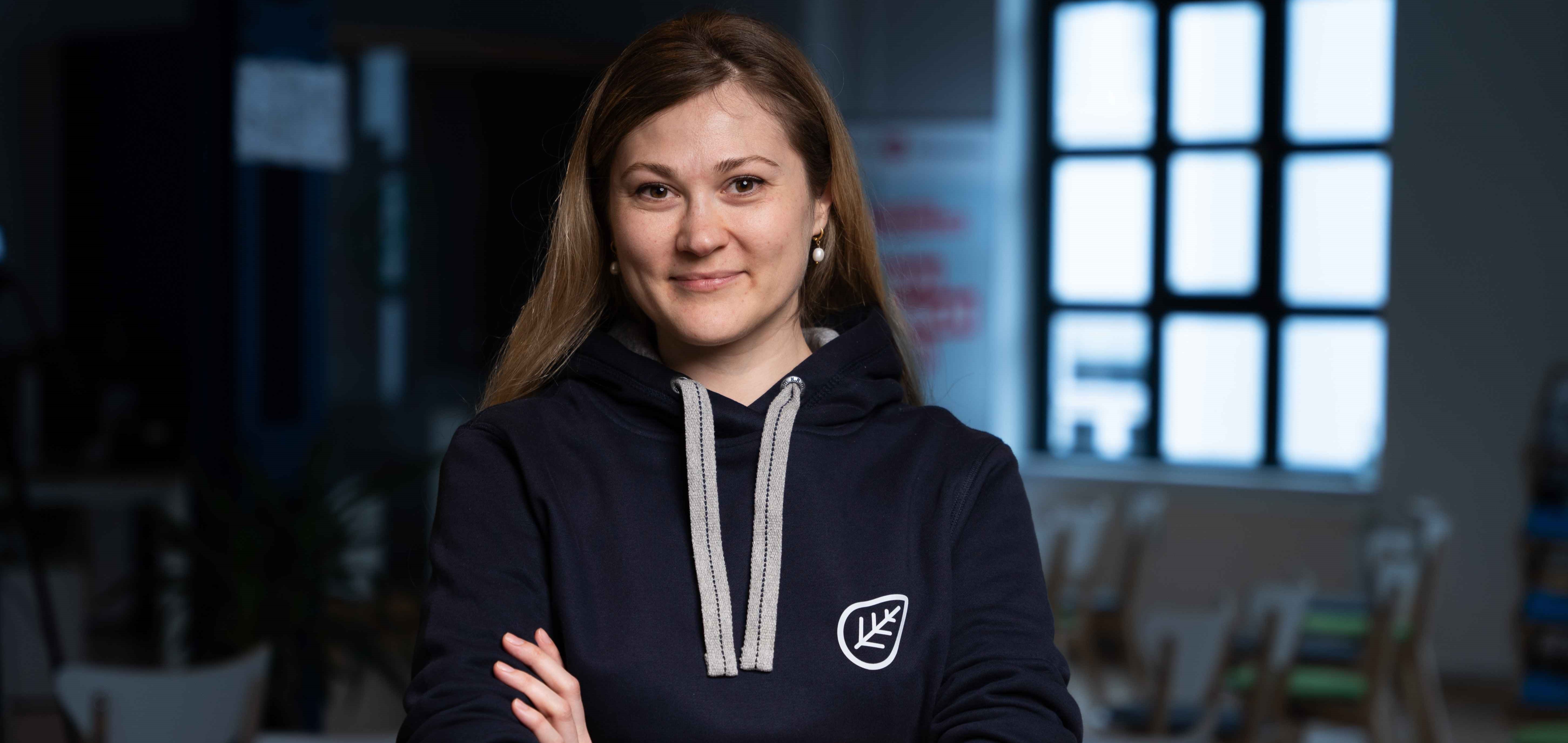Packaging can improve food safety and reduce waste - sounds pretty crazy, right? Absolutely not, if we are talking about intelligent packaging and Oscillum, a standout startup in the Desafía program, dedicated to changing the industry with their innovative technologies.
Their active packaging extends the shelf life of fresh foods by delaying ripening in fruits and vegetables and preventing the growth of harmful bacteria. This smart labeling system provides real-time monitoring of food quality and safety, changing color to indicate bacterial growth or loss of freshness. This ensures that consumers have access to the freshest and safest products, while also significantly reducing food waste. We talked with Sofía Riera Vidal to learn more about Oscillum.

Can you explain in more detail how Oscillum’s technology works, and what types of materials are integrated into Oscillum’s packaging?
At Oscillum, we use biotechnology to enhance food packaging by transforming containers into active or intelligent packages. Our primary goal is to improve industry logistics and reduce food waste. Our active packaging additives, branded as Stiint®, are made from food-grade organic materials that control the atmosphere within the packaging to extend shelf life. For instance, our Stiint® Pure additive makes the packaging surface unsuitable for bacterial growth, thereby preserving fresh products like meat and fish. For our intelligent packaging line, Addvibe®, we have developed biosensor labels that, when applied to food packages, provide real-time information on the quality and freshness of the products.
How does Oscillum’s packaging technology differ from other packaging solutions available in the market?
Our solutions are designed to reduce food waste without generating additional waste or environmental impact. We have ensured that all our active packaging solutions are food contact safe, integrated into the packaging, and do not affect recyclability — something unique in the industry. Regarding our smart packaging sensors, we are the first company to provide direct information on food safety and quality, rather than relying on indirect measures based on temperature or certain gases.
Have you encountered any conflicts of interest with grocery producers or other stakeholders while developing and promoting Oscillum? How did you handle them?
We generally encounter honest and positive interest from food producers and retailers, who see the potential of our products to positively impact their processes. The main issue we face is the narrow margins in the food industry, which make clients very cost-aware. Communicating that the reduction in food waste achieved with our technologies greatly compensates for their cost has been essential in promoting our products.
Can you describe the process of testing and validating the effectiveness of Oscillum’s technology? What kind of results have you seen so far?
We have an experienced technical department in Oscillum that is responsible for the development and initial testing of our technologies. Once we achieve a working prototype, we work with food producers, retailers or packaging providers to validate their effectiveness and reproducibility in their industrial facilities.
The industrial tests have allowed us to determine effectivity rates like a reduction of more than 50% of food waste in fruits when applying our Stiint® Lush additive for agriculture. We could also manage to confirm the antimicrobial activity of our Stiint® Lush additive for meat packaging against pathogens like Listeria monocytogenes.
What kind of data analytics or real-time monitoring capabilities does Oscillum’s technology provide to producers and retailers? How can this data be used to optimize supply chains?
With our Addvibe® biosensors, we can monitor different parameters related to food safety or quality, depending on the food matrix that they are applied onto. For example, with Addvibe® Meat we monitor volatile compounds released during the degradation process of meat, providing retailers and consumers with information on how advanced such degradation process is. With this information, retailers and producers can make informed decisions on which stages of the supply chain most contribute to poor food preservation and need intervention. Consumers can also learn to better manage their food stock by prioritizing consumption of products that are close to expiration.
You say that your sensors are embedded in biodegradable plastic. Question from someone who's not in the field - how can plastic be biodegradable?
Plastic is a broad term to describe any material capable of being molded that is based on a polymer. The polymers used to form plastics can come from different origins, including from biological sources. In that case, those polymers can be metabolized by biological systems like microorganisms, making them biodegradable. The main downside of biodegradable plastics is that they are usually not as resistant as traditional ones to moisture or traction, making them unsuitable for food packaging. With our additives, we manage to improve their properties, so they can compete with traditional plastics and provide an alternative to single use packaging.
save the date!
RootCamp, in partnership with ICEX Spain, is thrilled to celebrate the achievements of innovative startups, participating in The Desafía FoodTech Germany program. On September 11th, we are hosting a special Demo Day, called “Taste of Tomorrow”. Attendees will have the chance to explore promising FoodTech innovations from Spain and enjoy a lively show kitchen featuring products from the participating startups. Join us for an unforgettable day of culinary delights and engaging activities, and connect with the future leaders of the FoodTech industry. Register here.
/rootcamp_logo_white_2022.png?width=2123&height=630&name=rootcamp_logo_white_2022.png)

/RC%20logo%202022.png?width=2325&height=703&name=RC%20logo%202022.png)






